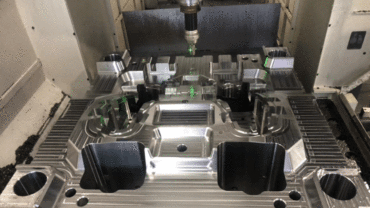
DuPont to build new specialty materials manufacturing facility in East China
April 4, 2019
DuPont is investing more than $80 million to build a new manufacturing facility in Zhangjiagang, Jiangsu Province in East China. The new facility will manufacture compounded high-end engineering plastics and adhesives to serve customers in transportation, electronics, industrial and consumer products markets. The planned site is expected to become operational in 2020 with expansion through 2023.
DuPont leaders and Zhangjiagang government officials signed the deal at a ceremony in Shanghai at the China International Import Expo (CIIE). Signing ceremony of DuPont specialty materials facility in East China. Thermostat housings and water outlets made with Zytel polyamide. The production facility, located in the Yangtze River International Chemical Industrial Park, will support growing demand for DuPont Transportation & Advanced Polymers (T&AP) business’ specialized materials.
Investment in new compounding lines will be focused primarily on DuPont Zytel polyamide (PA) engineering plastics, Delrin acetal (POM) resins, Hytrel thermoplastic polyesters, and Multibase thermoplastic elastomers (TPEs), lubricants and specialty silicone materials. The site plans to include new production lines for automotive adhesives, and intends to manufacture additional specialty products in the future, enabling it to be the first multi-business manufacturing facility in China for the new DuPont.
“This investment reinforces our commitment to China and the Asian market where we see strong growth potential across our businesses,” said Randy Stone, President of DuPont Transportation & Advanced Polymers. “Our new manufacturing facility will position us well to support anticipated growth in the automotive sector due to strong customer demand for our advanced polymers and solutions from end users such as electric and hybrid vehicle manufacturers. This investment, in cooperation with the Zhangjiagang government, will enable us to continue to deliver innovative solutions that serve high-growth end uses in a cost-effective, responsive way, and strengthen our leadership position in these key application spaces globally.” The Chinese auto industry will be a key customer for the Zhangjiagang manufacturing hub. According to the China Association of Automobile Manufacturers (CAAM), the country manufactured 20.49 million vehicles in the first nine months of 2018. Last year, China turned out 29 million vehicles, more than 2.5-times that of the second-ranked United States. China is also the world leader in production of new energy vehicles (NEVs), which is driving demands for advanced automotive materials and multi-material joining technologies. Around 777,000 NEVs were sold in 2017 and the government anticipates annual NEV production to hit two million in 2020, and NEV sales to account for 20 percent of overall auto sales by 2025.
